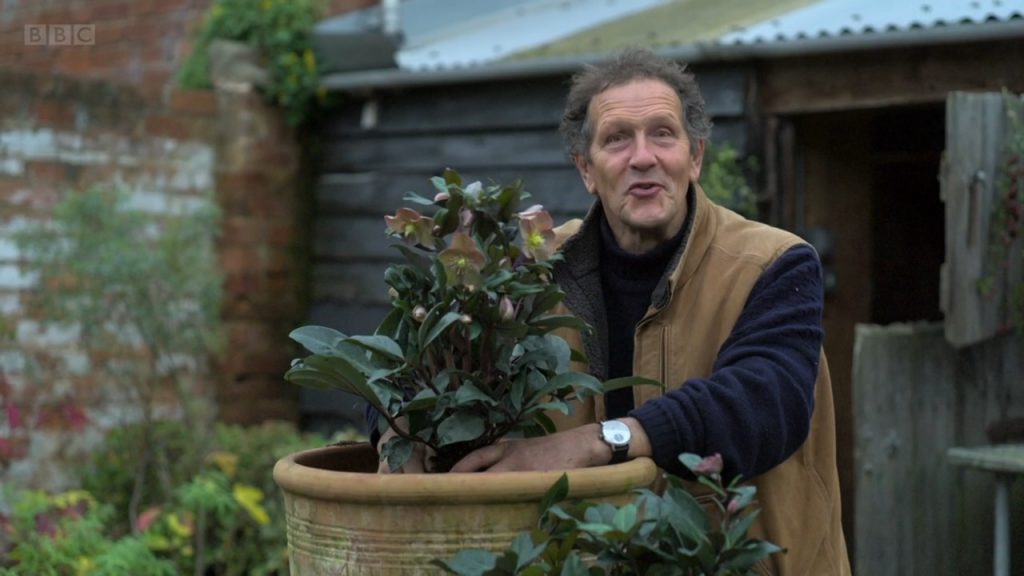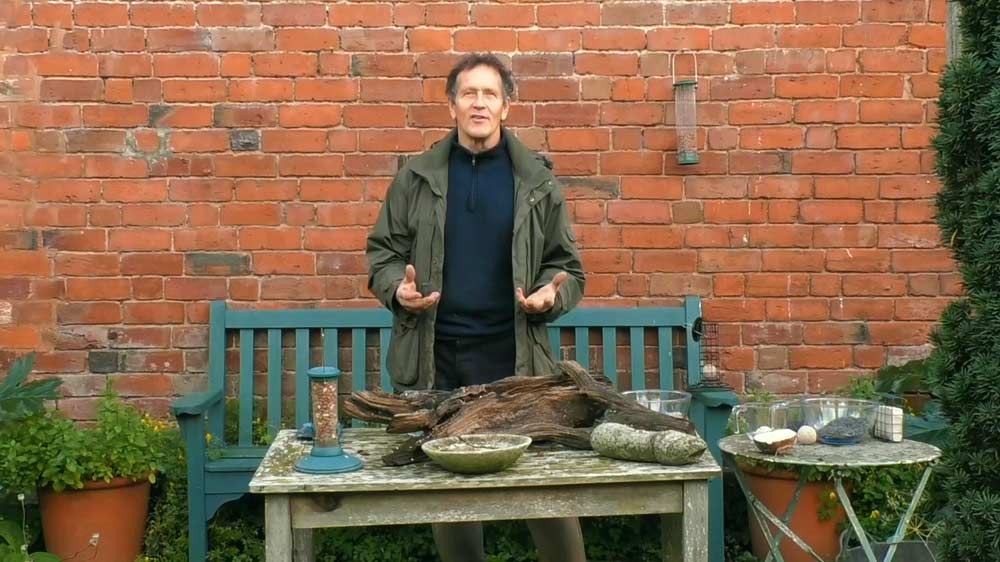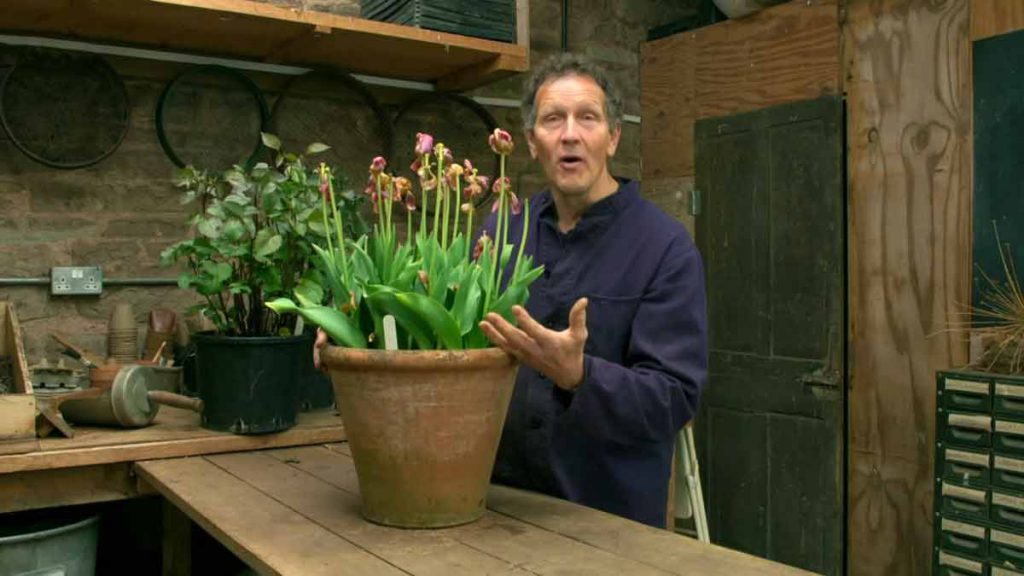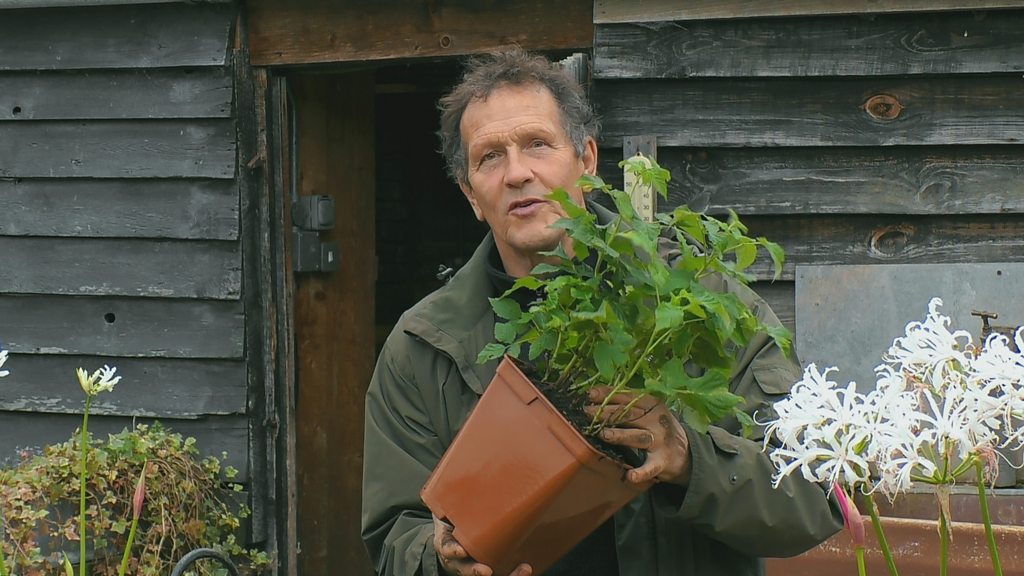Gardeners’ World Winter Specials 2021/22 episode 3: Monty celebrates the joy that the gardening year brings with a selection of brand new stories, and the team get into the Christmas spirit.
At Longmeadow, Monty creates a winter interest container filled with seasonal favourites. Rachel de Thame is joined by florist Arthur Parkinson as they spend a festive day making Christmas decorations with plant material sourced from the garden. Carol Klein meets comedian Joe Lycett at his home in Birmingham and talks to him about his new-found love of gardening. And Adam Frost looks at the ground cover plants which are the perfect backdrop to the border at this time of year.
Advolly Richmond heads to Cumbria and uncovers the fascinating history behind the topiary gardens at Levens Hall, while Sue Kent digs out her Christmas jumper and prepares for the big day as she creates some festive gardening gifts.
We visit a nursery in Yorkshire who specialise in growing one of the most popular house plants at Christmas – the poinsettia – and we also find out what viewers have been getting up to in their gardens.
Gardeners’ World Winter Specials 2021/22 episode 3
How to grow hellebores
Hellebores produce their pretty, nodding blooms in winter and early spring, which makes them a valuable asset in any garden. Braving the chill, they are hardy, compact and low maintenance, and their flowers provide valuable nectar for early pollinators. What’s more, most are happy in partial shade, where their usually evergreen leaves provide interest all year round.
Hellebores are perennials, mainly native to woodland edges, so they enjoy dappled shade – although some will also grow in sun, others in deeper shade. Many have bold evergreen leaves, some marbled or silvery for added appeal. These hardy plants bloom in winter and early spring, when little else is in its prime.
The most popular and easy-to-grow hellebores are the Oriental hybrids (Helleborus x hybridus) – there are hundreds to choose from, with flowers in shades of cream, pink or ruby, often speckled for added allure. Hellebores that form larger clumps, topped with clusters of small green flowers, include our native stinking hellebore (H. foetidus) and the holly-leaved hellebore (H. argutifolius) from Corsica. There are also various other hellebores that need more specialist attention, mainly because they dislike cold, wet soil or harsh frosts, so are best sheltered in a greenhouse over winter.
Cyclamen – Gardeners’ World Winter Specials 2021/22 episode 3
A delightful tuberous perennial providing colour often when little else is flowering, particularly in late winter or early spring. Hardy cyclamen species and cultivars are ideal for naturalising under trees, on banks or in a shady border and planted in association with other early-flowering woodland plants such as snowdrops, winter aconites and primroses.
Collect seed of most cyclamen species when the flower-stalk coils, drawing the seed capsule closer to the soil surface to release the ripe seed. Best sown fresh, seeds should be sown immediately after soaking overnight, in a mix of equal parts seed compost and sharp grit. Cover seeds carefully with a thin layer of seived compost as light can inhibit germination. Cover the container in a clear plastic bag and keep at a minimum temperature of 16°C (60°F) in light shade until large enough to transplant.
How to grow brugmansia
Bring tropical spectacle to a warm, sheltered patio or doorstep with the fragrant, hanging trumpet flowers of this tender shrub. It’s best grown in a large container, so it can easily be brought indoors over winter.
Also known as angel’s trumpets, these tender tropical shrubs or small trees are grown for their highly fragrant flowers. White, red or pastel shades of pink, orange or yellow, the large flared trumpets hang from the branches throughout summer. The flowers can grow to an impressive size – up to 30cm (1ft) long – and waft their heady perfume far and wide, especially on warm evenings.
Brugmansias come from tropical regions of South America. Here, most species are pollinated by moths, which is why the flowers are noticeably more fragrant in the evening. Only one species, Brugmansia sanguinea, has no fragrance, as the flowers are pollinated in the wild by hummingbirds, which are attracted by the bright red colour of the flowers.
Ground cover plants
Perennials and shrubs that form an attractive carpet can be put to good use in the garden, especially when looking for low-maintenance options. Many plants are low-growing and spreading in habit and may be termed ground-cover, but the prime requisite of a good ground cover plant is to provide a rapid, dense cover, to suppress germination and development of weed seeds and to eliminate the need for weed control measures. Such plants are usually evergreens or have densely twiggy growth.
Whatever ground-covering plants are used, some weed control will be necessary until the young plants have established and formed a cover (good soil fertility is therefore very important). They will also need to be kept watered during dry spells in the first season or two, especially if positioned under trees.





Merry Christmas. Thank you for posting all the AMAZING videos.
Merry Christmas
I love this bit of Gardeners World in early winter here in West Michigan, USA!
Thanks for the wonderful inspiring show. Love alll the ideas, will certainly try some next year. Happy New Year!